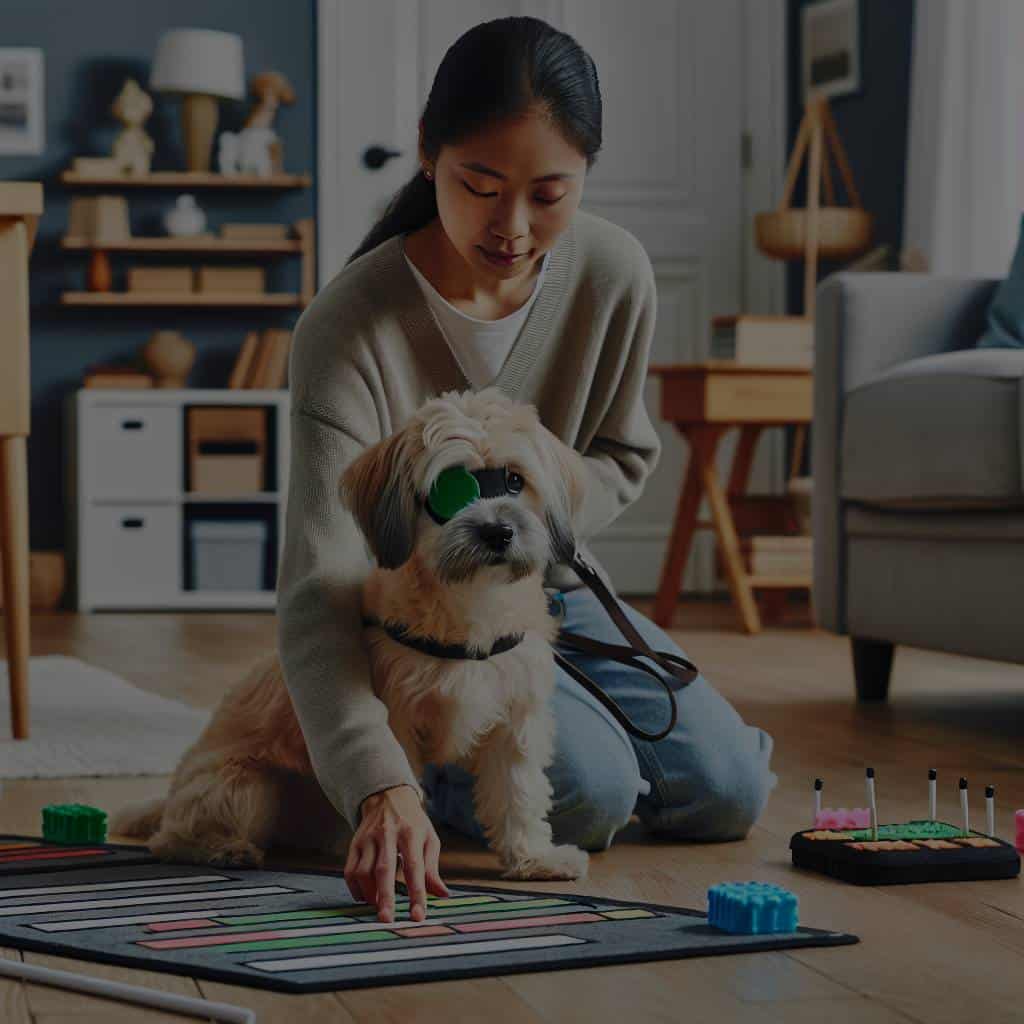How to Teach a Dog with Limited Vision to Navigate a New Home?

When you welcome a blind dog into your home, you take on a unique set of challenges. Limited vision can make it difficult for dogs to navigate unfamiliar spaces, but with the right training and considerations, your visually impaired pet can learn to feel at home. This article will guide you through the process of introducing your blind dog to a new home, helping them to navigate and feel safe while doing so.
Understanding Your Dog’s Vision Loss
Before you can begin training your blind dog, you need to understand the nature of your pet’s vision loss. Not all vision impairments are the same, and treatments and aids that work for one dog may not work for another.
A lire en complément : How to Choose the Correct Filter System for a Turtle’s Aquatic Habitat?
Blindness in dogs can occur due to a variety of reasons, such as genetic predispositions, diseases, or old age. According to the American Kennel Club (AKC), certain breeds are more prone to hereditary blindness, including dachshunds, cocker spaniels, and Siberian huskies. Understanding the root cause of your dog’s vision loss will allow you to better address their specific needs.
Once you have a handle on what your dog can and can’t see, you’ll be better equipped to help them navigate their new surroundings. You need to consider their remaining vision, if any, and their other senses. Dogs have an excellent sense of smell and hearing, and you can use these to your advantage in their training.
A lire aussi : What’s the Best Diet for a Cat with a History of Urinary Tract Infections?
Making Your Home Safe for a Blind Dog
When it comes to dog proofing your new home, things are a little different for a blind pet. There are a number of steps you can take to ensure that your visually impaired pet is safe and comfortable in their new environment.
Begin by removing any dangerous obstacles. This includes sharp-edged furniture, toxic plants, and small objects that your dog could trip over or swallow. If you have stairs in your home, consider installing a baby gate or other barrier to prevent falls.
You should also consider how to mark different areas of the home. Placing different textured mats in front of potentially dangerous areas like the stairs or the stove can alert your dog to their presence. Similarly, using different scents can help your dog understand which room they’re in.
Training Your Dog to Navigate the Space
Once your home is safe and secure, it’s time to teach your blind dog to navigate the space. Training a blind dog requires patience and consistency but can be highly rewarding.
One of the first things to do is help your dog map the house. You can do this by walking them around the space, allowing them to sniff and feel their way around. Keep in mind that this will take time and you don’t need to rush the process.
Use your voice as a guidance tool throughout the training process. Dogs with vision loss rely heavily on their hearing, and your voice can provide comfort and instruction. Consistently using the same commands will help your dog understand what you want them to do.
Encouraging Interaction with Other Pets
If you have other pets in the home, like other dogs or a cat, it’s important to encourage safe and positive interaction. Other animals can often sense when a fellow pet has a disability and may need time to adjust their behavior.
Don’t rush introductions between your blind pet and other animals. Allow them to smell each other first before any physical interaction. It may take time, but eventually, your pets will adjust to the presence of each other.
Remember, a blind pet can still enjoy a high quality of life. They can play, learn new things, and form deep bonds with their human and animal family members. With your help, they can navigate their new home and live a fulfilling, happy life.
Incorporating Dog Sports and Playtime
Introducing dog sports and playtime can greatly assist in helping a blind dog become more comfortable and confident in their new environment. Engaging in playtime and activities not only keeps your dog active but also aids in mental stimulation, which is crucial for a pet with vision loss.
Due to their limited vision, many traditional dog sports may not be suitable. However, there are numerous games and sports specifically designed for visually impaired pets. One such sport is Nose Work, a game that relies on a dog’s sense of smell rather than sight. This sport involves hiding treats in various places and encouraging the dog to find them. This can be an excellent way to help your blind dog familiarize themselves with their surroundings.
Toys with distinctive sounds can also be helpful. Squeaky toys or those with bells inside can provide stimulation and present an opportunity for your dog to use their hearing to locate and engage with them.
Remember, just like any other dog, your visually impaired pet needs regular exercise to stay healthy. This may require slight modifications to their routine, like leashed walks instead of free roaming in a park, but it is entirely possible to keep your blind pet active and healthy.
Managing Food and Water Intake
Managing food and water intake is a critical aspect of caring for a blind pet. For a dog with vision loss, finding their food and water bowls could be a challenge.
Always keep the food and water bowls in the same place so that your dog can easily find them. It’s a good idea to place these bowls away from high-traffic areas to prevent accidental spills. Using bowls that have a distinct smell or texture can also assist your dog in locating them.
Consider feeding your dog at the same times each day. This will help them anticipate meal times, reducing anxiety.
It’s also essential to monitor your pet’s weight. Blind dogs may be less active than their sighted counterparts, making them more prone to weight gain. Regular vet check-ups will ensure that your pet is maintaining a healthy weight.
Conclusion
Living with a blind dog may present unique challenges, but remember, your pet is just as capable of leading a joyful and fulfilling life as any other dog. By understanding their needs and making a few adjustments, you can help your dog navigate their new home and thrive in their environment.
Whether it’s making your home safe, incorporating dog sports into their routine, or managing their food and water intake, these steps will help your blind pet adjust to their new surroundings. Patience, consistency, and love are key in helping your visually impaired companion feel safe and loved in their new home.
